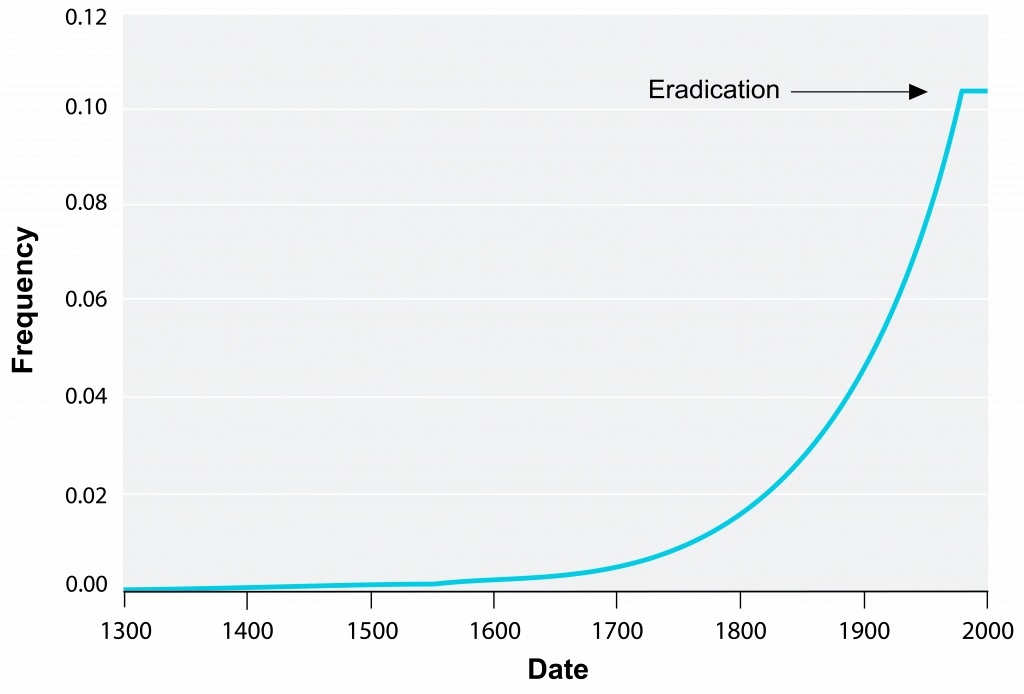2.17 Wrapping Up: Are Humans Evolving?
 Are Humans Evolving?
Are Humans Evolving?
Humans have been subjected to mutation, selection, drift, and migration
Humans, as living inhabitants of the planet, are subject to the same natural laws as all other living organisms. Evolution is no exception: the diversity of humanity today is the result of millions of years of biological evolution—mutation, selection, migration, and drift. This is not to say we aren’t special in other ways! As the biologist George Gaylord Simpson said, “Evolution has no purpose; man must supply this for himself.”
Return to the CCR5-mutation mystery
Thus far, we’ve established the following facts about the CCR5 mutation and HIV-AIDS:
- HIV-AIDS is a disease of the immune system, targeting the very cells that typically protect you from disease-causing agents or pathogens.
- Some individuals have a genetic variant that makes them resistant to some forms of HIV.
- Resistant forms of this CCR5 gene are most common in Northern Europe, where HIV is not a strong selective force; in contrast, resistance is not found in sub-Saharan Africa and Southeast Asia, where HIV is a strong selective force.
- The resistant gene appears to have been spread by the Vikings, during their expansion through Europe in the 9th and 10th centuries.

But why was the genetic variant, or allele, present in the Vikings at all? The level at which we see this allele in Viking-invaded territories suggests selection for the CCR5 mutation; that is, it seems to have conferred some sort of benefit, but long before HIV was present in humans. Various hypotheses have emerged to explain the prevalence of the mutation, but many scientists agree that the nonfunctiong CCR5 protein must have protected the Vikings’ ancestors against a pathogen similar in structure to HIV. One suggested pathogen is smallpox, as the steady rate of death from smallpox that has afflicted European children since the origin of the allele could have provided the necessary selective pressure to result in the frequencies of the gene that we see today (Figure 2.19)
As we conclude this chapter and prepare for in-class discussion, be sure to return to the chapter’s goals and objectives.

